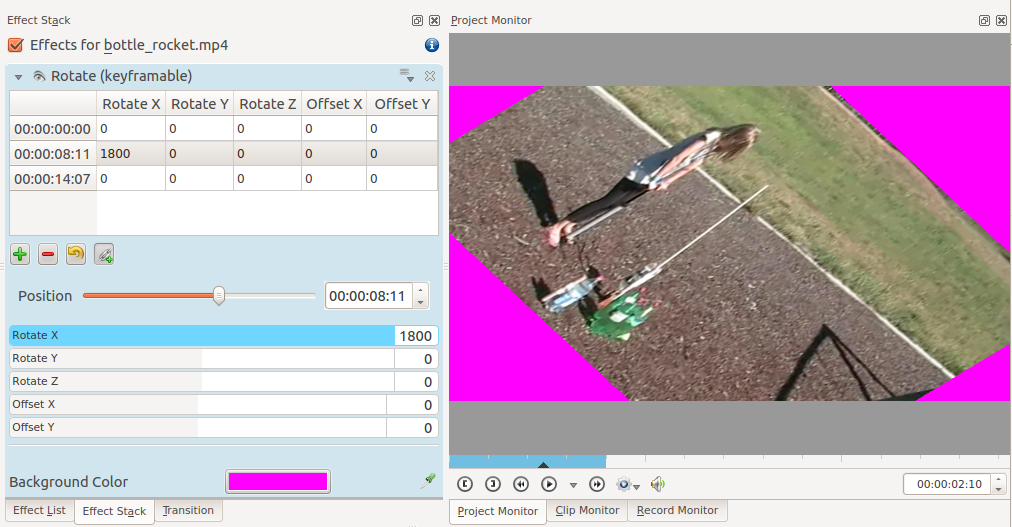Archive:Kdenlive/Manual/Effects/Crop and transform/Rotate (keyframable): Difference between revisions
Appearance
m →Rotate |
|||
| Line 10: | Line 10: | ||
[[File:Kdenlive Rotate keyframeable crop and transform.png|left|frame|Rotate Keyframeable example]] | [[File:Kdenlive Rotate keyframeable crop and transform.png|left|frame|Rotate Keyframeable example]] | ||
<br clear=all> | <br clear=all> | ||
The units of rotation are tenths of a degree. | The units of rotation are tenths of a degree; e.g., 1800 = 180 degree rotation. | ||
Rotate X rotates the frame in the plane of the screen. | '''Rotate X''' rotates the frame in the plane of the screen. | ||
Rotate Y and Rotate Z create the illusion of 3D rotation when used dynamically with keyframes. | '''Rotate Y''' and '''Rotate Z''' create the illusion of 3D rotation when used dynamically with keyframes. | ||
The difference between | The difference between '''Rotate Y''' and '''Rotate Z''' is that the apparent rotation in '''Rotate Y''' appears to be around a horizontal axis. The rotation in '''Rotate Z''' appears to be around a vertical axis. | ||
Revision as of 00:29, 13 April 2015
Rotate
Rotates the image.
See also Affine Transition that can also achieve a similar effect.
{{#ev:youtube|Wfx1Cp5g6Mo}}

The units of rotation are tenths of a degree; e.g., 1800 = 180 degree rotation.
Rotate X rotates the frame in the plane of the screen.
Rotate Y and Rotate Z create the illusion of 3D rotation when used dynamically with keyframes.
The difference between Rotate Y and Rotate Z is that the apparent rotation in Rotate Y appears to be around a horizontal axis. The rotation in Rotate Z appears to be around a vertical axis.
